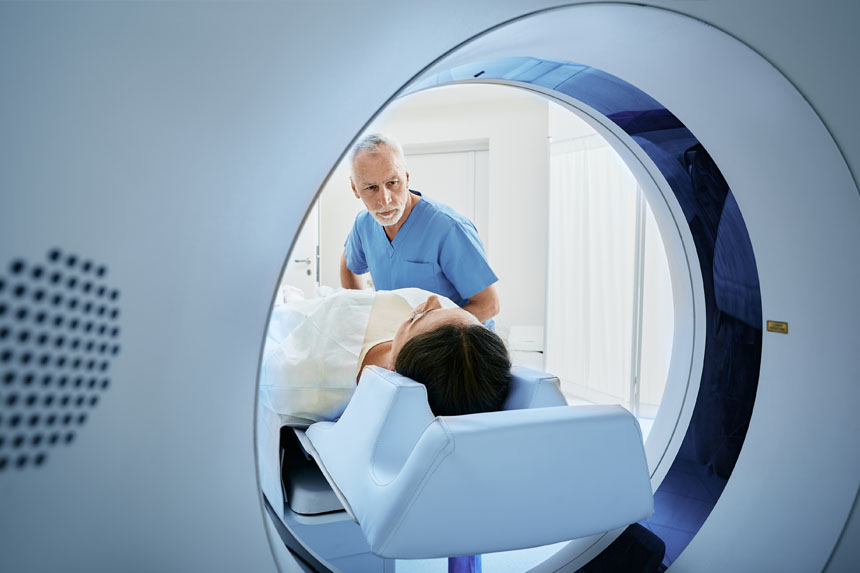Oncology is undergoing a remarkable transformation. New discoveries, advancements in technology, and a growing emphasis on precision medicine are all reshaping the cancer therapy market at an unprecedented pace. This presents a wealth of opportunities for both established players and innovative newcomers. In this blog, we’ll explore recent oncology trends in the most common cancers using real-world data and highlight innovative solutions shaping the future of oncology.
Current trends in breast, prostate, and lung cancer
Breast cancer therapy market
Breast cancer continues to be a major health concern for women worldwide, with incidence rates steadily climbing. In the U.S. alone, there are 310,720 estimated new cases of breast cancer in 2024. Its high prevalence translates to a strong demand for a broad range of medical treatments, encompassing everything from initial diagnosis to ongoing management and post-treatment care.
Further contributing to the commercial therapy potential is the extended treatment duration faced by patients and its propensity for recurrence or metastasis. Multiple lines of therapy are often required over a prolonged period. Treatment may include surgery, radiation, chemotherapy, hormone therapy, and targeted therapies. Each treatment phase represents an opportunity for pharma companies and medical device manufacturers to deliver innovative solutions that enhance patient outcomes and quality of life.
Additionally, the need for continuous monitoring and follow-up care ensures sustained interaction with healthcare providers and the ongoing use of medical technologies and services. For instance, screening mammography was the most reported radiology procedure in imaging centers in 2023, according to Definitive Healthcare data.
As treatment strategies evolve to address disease progression and individual patient needs, there is ongoing demand for new therapeutic options and personalized approaches. This demand is driving innovation in the market, encouraging the development of novel drugs, combination therapies, and advanced technologies.
Prostate cancer treatment market
Prostate cancer is one of the leading cancer diagnoses among men, with 299,010 expected cases in 2024. Approximately 1 in 8 men will be diagnosed with prostate cancer during their lifetime, a rate comparable to that of breast cancer in women. In the U.S., the Cleveland Clinic in Ohio, the University Hospital in Michigan, and Moffitt Cancer Center in Florida reported the highest volume of prostate cancer diagnoses, based on Definitive Healthcare claims data.
The use of early screening measures allows for the detection of many prostate cancer cases at early stages when treatment is most effective, leading to a generally positive long-term prognosis for many patients. Hormonal therapy plays a dominant role in treating prostate cancer, particularly for hormone-sensitive, non-metastatic prostate cancer. These agents are routinely used in all lines of therapy.
By 2029, the prostate cancer market size is expected to reach $21.2 billion. The combination of an increasing incidence rate and evolving technologies surrounding diagnosis and treatment are driving this market growth. Organizations with a means to reduce payor and provider costs along the patient journey and improve patient recovery can find success here.
Lung cancer treatment market
Lung cancer remains a critical area of focus in oncology, with an estimated 234,580 new cases expected in the U.S. in 2024. Lung cancer is broadly divided into small-cell lung cancer (SCLC) and non-small-cell lung cancer (NSCLC). NSCLC accounts for more than 80% of all lung cancers. Top hospitals in the U.S. for the most patient visits for lung cancer include Moffitt Cancer Center in Florida, Cleveland Clinic in Ohio, and Memorial Sloan Kettering Cancer Center in New York.
Treatment for NSCLC typically involves a combination of surgical intervention, chemotherapy, radiation therapy, and increasingly, immunotherapies. Despite these advancements, the five-year survival rate for patients is about 26% in all stages. This highlights the urgent need for continued innovation.
By 2031, the lung cancer therapeutics market is projected to see significant growth, with the NSCLC drug market doubling to $48.0 billion. Immune checkpoint inhibitors (ICIs) are expected to earn more than half of these sales ($26.0 billion).
Advances in cancer treatment
Recent advances in cancer treatment have transformed the oncology landscape, offering targeted therapies, immunotherapies, and personalized medicine approaches that improve survival rates and enhance quality of life for patients.
Immunotherapy: Immunotherapy has revolutionized cancer treatment by leveraging the body's immune system to target and eliminate cancer cells. Checkpoint inhibitors, such as pembrolizumab (Keytruda) and nivolumab (Opdivo), have been FDA-approved for treating various cancers, including melanoma, lung cancer, and kidney cancer. These drugs work by inhibiting proteins that restrict immune response, effectively "releasing the brakes" on the immune system, allowing it to recognize and attack cancer cells more effectively.
Targeted therapies: Targeted therapies are designed to interfere with specific molecules involved in cancer growth and progression. Tyrosine kinase inhibitors (TKIs) like imatinib (Gleevec) and osimertinib (Tagrisso) have transformed the treatment landscape for chronic myeloid leukemia (CML) and non-small cell lung cancer (NSCLC), respectively. These therapies target genetic mutations or abnormalities driving cancer growth, providing more precise and effective treatment options compared to traditional chemotherapy, with fewer side effects.
Precision medicine: Advancements in genomics and molecular profiling have enabled precision medicine approaches tailored to individual patients' genetic profiles. Liquid biopsies, which analyze circulating tumor DNA (ctDNA), are increasingly used to detect genetic mutations and monitor treatment response non-invasively. This technology allows oncologists to adjust treatment regimens based on real-time molecular changes in tumors, optimizing therapy and improving outcomes.
CAR-T cell therapy: CAR-T cell therapy represents a breakthrough in treating certain blood cancers, such as acute lymphoblastic leukemia (ALL) and diffuse large B-cell lymphoma (DLBCL). This personalized therapy involves engineering a patient's T cells to express chimeric antigen receptors (CARs) that specifically recognize and attack cancer cells. FDA-approved CAR-T therapies like tisagenlecleucel (Kymriah) and axicabtagene ciloleucel (Yescarta) have shown remarkable efficacy in patients who have not responded to traditional treatments.
These advancements highlight the significant strides made in cancer treatment over the past decade, offering new hope and improved outcomes for patients affected by this complex disease.
Artificial intelligence in oncology
In recent years, artificial intelligence has been applied to almost all facets of oncology, from basic research to drug development and clinical care. Examining FDA-approved AI-enabled medical devices reveals that AI is changing cancer diagnostics in clinical practice. Specifically, AI technologies are making strides in breast, lung, and prostate cancers.
In diagnostics, AI-powered imaging techniques can detect abnormalities in medical images with greater sensitivity than traditional methods, aiding in early cancer detection. This can allow for more timely intervention and potentially improve patient outcomes. Today, there are at least five FDA–approved breast-imaging detection and diagnosis algorithms.
Another exciting area is precision medicine. In a proof-of-concept study, researchers have developed an AI tool that can predict whether a patient’s cancer will respond to a specific drug. This personalized approach could allow physicians to tailor treatment plans to each individual patient, maximizing effectiveness and minimizing side effects.
AI is also making strides in drug discovery. By analyzing vast datasets of patient information and molecular data, AI can help researchers identify new targets for cancer therapies and accelerate the development of life-saving drugs. Additionally, AI can be used to optimize clinical trial design, making them more efficient and cost-effective.
The integration of AI in oncology is not without challenges. Ensuring the accuracy and reliability of AI algorithms, addressing ethical concerns, and integrating AI into clinical practice are critical issues that need to be addressed. However, the potential benefits of AI in oncology are immense. By improving diagnostic accuracy, personalizing treatment plans, and accelerating drug discovery, AI is poised to transform cancer care and improve outcomes for millions of patients worldwide.
Learn more
Want to see how Definitive Healthcare can give you an edge over your competitors in the dynamic oncology market? Sign up for a product demo today to get hands-on experience with our platform.




